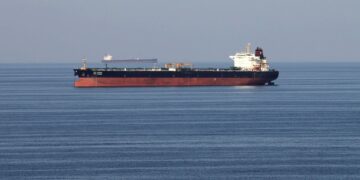With the U.S. initiating airstrikes on Iranian nuclear sites and the Iran-Israel conflict intensifying, attention has shifted once again to the critical energy corridor of the Strait of Hormuz.
Approximately 20 million barrels of oil transit this strait daily, accounting for nearly 20% of global consumption. A potential blockade could lead to soaring prices, disrupt markets, and trigger widespread economic repercussions for energy import-dependent nations like India and those in the EU.
This strategically significant strait, which stretches 160 kilometers and narrows to just 33 kilometers at its tightest point, links the Persian Gulf to the Indian Ocean. Every day, numerous massive tankers navigate its waters, transporting oil and liquefied natural gas from countries including Saudi Arabia, Kuwait, Iraq, the United Arab Emirates, and Iran.
Owing to its narrow, shallow, and exposed geographical layout, the strait is particularly vulnerable to missile strikes, fast-moving Revolutionary Guard boats, and drone assaults. For decades, the West has referred to it as “the most vulnerable point in global energy.”
On Monday morning, the anticipated shock to the oil market did not materialize, even as Brent crude prices briefly surpassed $79 a barrel, avoiding what could have been a significant crisis.
This resilience seems to stem from investors’ familiarity with the ongoing fluctuations in the Israel-Iran conflict or their belief that Tehran would not unleash its most formidable weapon without risking severe retaliation.

















